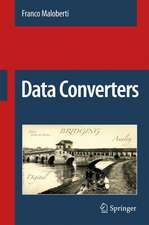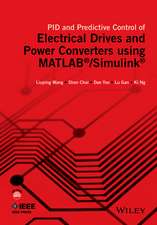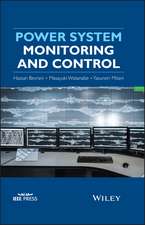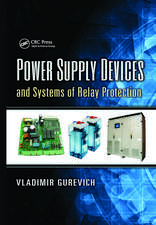Signal Processing Methods for Music Transcription
Editat de Anssi Klapuri, Manuel Davyen Limba Engleză Paperback – 28 oct 2010
| Toate formatele și edițiile | Preț | Express |
|---|---|---|
| Paperback (1) | 796.33 lei 38-44 zile | |
| Springer Us – 28 oct 2010 | 796.33 lei 38-44 zile | |
| Hardback (1) | 956.81 lei 6-8 săpt. | |
| Springer Us – 8 mai 2006 | 956.81 lei 6-8 săpt. |
Preț: 796.33 lei
Preț vechi: 1047.81 lei
-24% Nou
Puncte Express: 1194
Preț estimativ în valută:
152.39€ • 160.24$ • 125.91£
152.39€ • 160.24$ • 125.91£
Carte tipărită la comandă
Livrare economică 12-18 aprilie
Preluare comenzi: 021 569.72.76
Specificații
ISBN-13: 9781441940353
ISBN-10: 1441940359
Pagini: 452
Ilustrații: XII, 440 p. 124 illus.
Dimensiuni: 155 x 235 x 24 mm
Greutate: 0.62 kg
Ediția:Softcover reprint of hardcover 1st ed. 2006
Editura: Springer Us
Colecția Springer
Locul publicării:New York, NY, United States
ISBN-10: 1441940359
Pagini: 452
Ilustrații: XII, 440 p. 124 illus.
Dimensiuni: 155 x 235 x 24 mm
Greutate: 0.62 kg
Ediția:Softcover reprint of hardcover 1st ed. 2006
Editura: Springer Us
Colecția Springer
Locul publicării:New York, NY, United States
Public țintă
ResearchDescriere
Signal Processing Methods for Music Transcription is the first book dedicated to uniting research related to signal processing algorithms and models for various aspects of music transcription such as pitch analysis, rhythm analysis, percussion transcription, source separation, instrument recognition, and music structure analysis. Following a clearly structured pattern, each chapter provides a comprehensive review of the existing methods for a certain subtopic while covering the most important state-of-the-art methods in detail. The concrete algorithms and formulas are clearly defined and can be easily implemented and tested. A number of approaches are covered, including, for example, statistical methods, perceptually-motivated methods, and unsupervised learning methods. The text is enhanced by a common reference and index.
Cuprins
Foundations.- to Music Transcription.- An Introduction to Statistical Signal Processing and Spectrum Estimation.- Sparse Adaptive Representations for Musical Signals.- Rhythm and Timbre Analysis.- Beat Tracking and Musical Metre Analysis.- Unpitched Percussion Transcription.- Automatic Classification of Pitched Musical Instrument Sounds.- Multiple Fundamental Frequency Analysis.- Multiple Fundamental Frequency Estimation Based on Generative Models.- Auditory Model-Based Methods for Multiple Fundamental Frequency Estimation.- Unsupervised Learning Methods for Source Separation in Monaural Music Signals.- Entire Systems, Acoustic and Musicological Modelling.- Auditory Scene Analysis in Music Signals.- Music Scene Description.- Singing Transcription.
Textul de pe ultima copertă
Signal Processing Methods for Music Transcription is the first book dedicated to uniting research related to signal processing algorithms and models for various aspects of music transcription such as pitch analysis, rhythm analysis, percussion transcription, source separation, instrument recognition, and music structure analysis. Following a clearly structured pattern, each chapter provides a comprehensive review of the existing methods for a certain subtopic while covering the most important state-of-the-art methods in detail. The concrete algorithms and formulas are clearly defined and can be easily implemented and tested. A number of approaches are covered, including, for example, statistical methods, perceptually-motivated methods, and unsupervised learning methods. The text is enhanced by a common reference and index.
This book aims to serve as an ideal starting point for newcomers and an excellent reference source for people already working in the field. Researchers and graduate students in signal processing, computer science, acoustics and music will primarily benefit from this text. It could be used as a textbook for advanced courses in music signal processing. Since it only requires a basic knowledge of signal processing, it is accessible to undergraduate students.
This book aims to serve as an ideal starting point for newcomers and an excellent reference source for people already working in the field. Researchers and graduate students in signal processing, computer science, acoustics and music will primarily benefit from this text. It could be used as a textbook for advanced courses in music signal processing. Since it only requires a basic knowledge of signal processing, it is accessible to undergraduate students.
Caracteristici
The first book uniting state-of-the-art research in signal processing for music transcription
Covers a range of topics and approaches discussed by international experts in the field
Contributes to the dissemination of the increasingly relevant topic of MPEG-7 standardization
Describes models for the different subtopics of music transcription, including pitch analysis, percussion transcription, source separation, instrument recognition, and music structure analysis
Comprehensive review of existing methods
Ideal starting point for newcomers and a valuable reference source for people working in the field
Includes concrete algorithms and formulas for various methods, making it easy for the reader to implement and experiment
Covers a range of topics and approaches discussed by international experts in the field
Contributes to the dissemination of the increasingly relevant topic of MPEG-7 standardization
Describes models for the different subtopics of music transcription, including pitch analysis, percussion transcription, source separation, instrument recognition, and music structure analysis
Comprehensive review of existing methods
Ideal starting point for newcomers and a valuable reference source for people working in the field
Includes concrete algorithms and formulas for various methods, making it easy for the reader to implement and experiment









![Principles of GNSS, Inertial, and Multisensor Integrated Navigation Systems [With DVD]: Volume 2](https://i0.books-express.ro/bt/9781608070053/principles-of-gnss-inertial-and-multisensor-integrated-navigation-systems-with-dvd.jpg)
